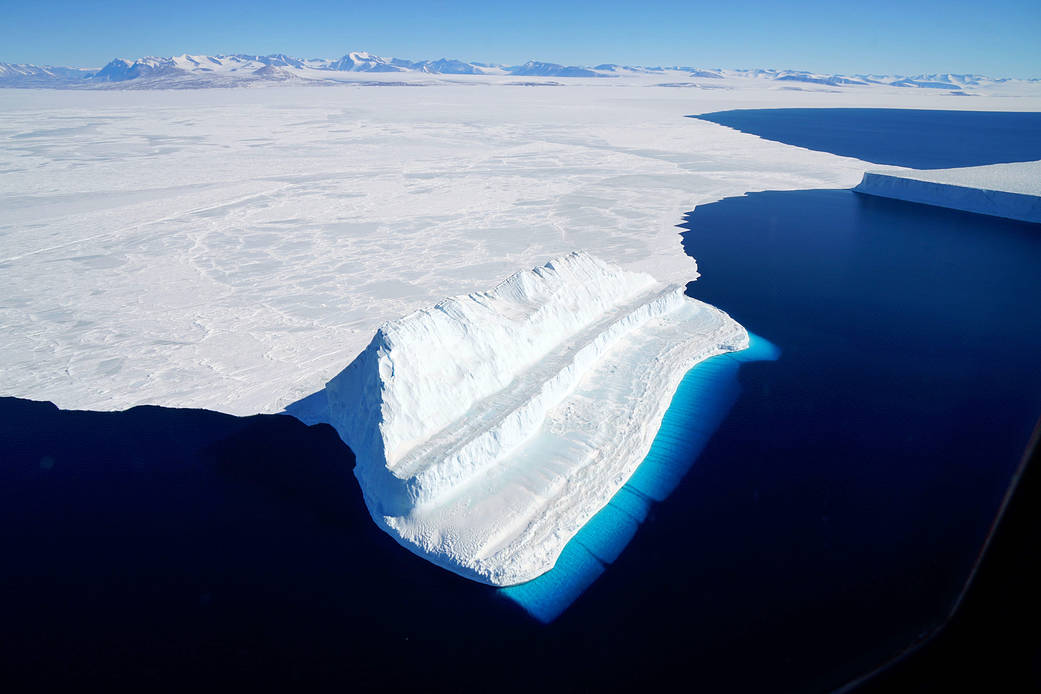Antarctica Is Dumping Hundreds of Gigatons of Ice into the Ocean Right Now

Antarctica is hurling its guts into the ocean. And it's happening six times faster now than it was even four decades ago.
The southern, frozen continent lost an average of 252 gigatons of ice a year to the sea between 2009 and 2017. Between 1979 and 1990, it lost an average of just 40 gigatons per year. That means that ice loss on Antarctica has accelerated by 6.3 times in just four decades, according to new research published yesterday (Jan. 14) in the journal Proceedings of the National Academy of Sciences.
Ice loss in Antarctica is a big deal. As the sea ice at the North Pole melts away, the melting causes negative consequences and ripple effects for the global climate. However, that melting doesn't directly raise sea levels. North polar ice is already floating on the ocean, so turning it from solid to liquid doesn't add to the total volume of water in the seas, according to NASA. [Image Gallery: Life at the South Pole]
But Antarctica is a landmass buried beneath ice. And it holds the largest reserve of frozen, landlocked water anywhere on the planet. Any ice loss on Antarctica directly contributes to the total volume of water in the oceans, and raises sea levels.
And 252 gigatons a year is a meaningful number when it comes to sea levels. A gigaton is a billion metric tons, and each metric ton is 2,204 pounds — a bit less than the weight of a small car. Each gigaton of ice that flows into the ocean is roughly equivalent in mass to about 720 million Toyota Prius-size vehicles flung overboard. You could fling every car on Earth into the ocean and the mass probably wouldn't top 2 gigatons. Two-hundred-and-fifty-two gigatons is nearly half the mass of every living thing on Earth, every year. According to a statement from the authors, it's already led to sea levels rising 0.5 inches (1.3 centimeters) in the period covered by the study.
In coming decades, as Earth warms even more and the ice melts faster, that rise will increase dramatically, the researchers wrote in the study. Fractions of inches could turn into meters of sea level rise.
To come up with the precise numbers on ice loss, the researchers used decades of NASA satellite and flyover data to carefully map ice movement over the four-decade period, and compared the rates of ice flowing into the sea and rates of new ice forming through processes like snowfall. They further broke the continent up into 18 regions, and mapped how the regions behaved differently from one another. That helped them identify the major problem areas for ice loss, centered especially in East Antarctica.
Sign up for the Live Science daily newsletter now
Get the world’s most fascinating discoveries delivered straight to your inbox.
"The Wilkes Land sector of East Antarctica has, overall, always been an important participant in the mass loss, even as far back as the 1980s, as our research has shown," Eric Rignot, lead author on the study by climate scientists at the University of California, Irvine, said in the statement. "This region is probably more sensitive to climate [change] than has traditionally been assumed, and that's important to know, because it holds even more ice than West Antarctica and the Antarctic Peninsula together."
The comprehensive, decades-long picture offered by this paper lends clarity to a complicated picture of ice loss in the region. In the Arctic Ocean, ice has behaved fairly predictably as the world has warmed, with a rapid decline in ice loss visible from one year to the next. But Antarctica's story has been less straightforward, with individual years seeming icier or less icy, even as individual regions of the continent have been obviously unstable.
But the 40-year view offered by this paper shows that whatever variability Antarctica might have year to year, the long-term behavior of its ice is clear, and dangerous for the rest of the planet.
- What a View: Amazing Astronaut Images of Earth
- Image Gallery: Greenland's Melting Glaciers
- Image Gallery: Back-Breaking Science at the Earth’s Poles
Originally published on Live Science.










